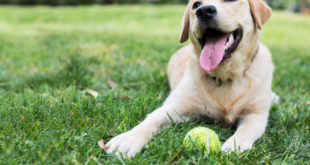Walking your dog on a leash can be a fun and enjoyable experience for both you and your furry friend. However, the reality is that many dogs struggle with leash manners, making walks frustrating and even dangerous. Whether your dog lunges at other dogs or pulls incessantly, teaching your dog to walk calmly on a leash is a crucial skill to master. In this article, we will provide you with expert tips and tricks to make training your dog to walk on a leash a stress-free and rewarding experience. Get ready to transform your daily walks from chaos to calmness!
Table of Contents
1. Teaching Fido to Walk on a Leash: A Comprehensive Guide
Walking your dog on a leash is an essential training that every pup should master. It lets them safely explore and experience the world around them without getting into any trouble. However, getting started on this training can be tricky, especially if your dog is new to the concept. This comprehensive guide will dive into the basics of leash walking and provide you with helpful tips and tricks along the way.
One crucial aspect of leash walking is selecting the right leash and collar for your dog. Consider the size of your dog, as well as your own strength and comfort when choosing. A standard 6-foot leash is often best, along with a well-fitting collar or harness. A collar should be snug enough to fit only two fingers underneath, while a harness should fit comfortably around the chest and shoulders. Once you’ve got the right equipment, it’s time to introduce your dog to the concept of walking on a leash.
Begin by holding the leash in your hand and allowing your dog to sniff it and become familiar with it. Once they’re comfortable, attach the leash to their collar or harness and allow them to walk around the house or backyard with it on. Gradually increase the length of time and distance that your dog wears the leash until they’ve acclimated to it. Practice walking in a distraction-free environment first, and gradually introduce new sights, sounds, and smells as your dog becomes more confident. Remember, consistency, patience, and positive reinforcement are key to successfully training your dog to walk on a leash.
2. Step-by-Step Instructions for Leash Training Your Dog
Leash training your dog is an essential part of any pet’s life, and it can be quite an overwhelming process. However, with proper guidance and consistent practice, you can make the experience easier and enjoyable, both for you and your furry companion.
Firstly, choose the right leash and collar for your dog. Collars should fit snugly but not too tight around the neck. Leashes should be comfortable to hold and long enough to walk but short enough to have control. Keep in mind that the type of leash and collar you choose may vary depending on the size and breed of your dog.
Once you have the right tools, it is time to begin training. Start indoors with no distractions, attach the leash to the collar and let your dog drag it around for some time to get used to the sensation. Next, hold the leash and entice your dog to come towards you with a treat. When they reach you, reward them with the treat and praise to associate the leash with positive reinforcement. Repeat this exercise several times until your dog is comfortable walking on a leash indoors.
Finally, take your training outside and choose quiet places like a park to walk your dog. Use the same treat and praise exercise to keep your dog focused on you while you walk, and gradually increase the duration of your walks. Remember to be patient and consistent with the training, and soon enough, your dog will enjoy walking on a leash confidently.
3. The Dos and Don’ts of Training Your Dog to Walk on a Leash
When it comes to training your dog to walk on a leash, there are certain things you should and should not do. Here are some dos and don’ts to keep in mind:
Dos:
- Start training your dog when they are young. This will make it easier to teach them good habits from the beginning.
- Choose a comfortable collar or harness that fits well and will not hurt your dog.
- Reward your dog for good behavior. Whether it’s with treats or praise, positive reinforcement is key to getting your dog to follow your lead.
- Be patient and consistent. It may take some time for your dog to learn how to walk on a leash, so don’t get discouraged, and keep practicing every day.
Don’ts:
- Never use force or punishment to get your dog to walk on a leash. This can be harmful and will only make your dog fearful of you.
- Don’t use a leash that is too long, as this can make it difficult to control your dog and could lead to accidents.
- Avoid pulling or yanking on the leash, as this can hurt your dog and make them resistant to walking on a leash in the future.
- Don’t use a retractable leash, as these can be dangerous and do not provide enough control over your dog.
By following these dos and don’ts, you can ensure that your dog learns the proper way to walk on a leash and make your walks together enjoyable for everyone involved.
4. A Look into Common Mistakes to Avoid When Leash Training Your Pup
When it comes to leash training your pup, there can be a lot of trials and errors. And understandably so, because pups are still in their learning phase. Ensuring that they adhere to certain commands can be challenging. However, to make sure that you avoid some of the most common mistakes that pet parents make, here is a list of things to look out for when training your pup:
- Leaving the collar too loose or too tight: Make sure that the collar is not too tight or too loose that it slips out, because this poses a safety risk for the puppy.
- Not being persistent enough: Consistency is key, especially when it comes to training your pup. Don’t be discouraged if your pup doesn’t adhere to certain commands at first. Don’t give up, and don’t stop practicing.
- Letting your pup lead: The leash should always be loose, but there should still be a sense of control. Do not let your pup lead you around or pull you too hard. Establish who is in charge on the walk by using simple and clear commands.
Remember that your pup is still learning, so be patient and kind while training them. By avoiding these common mistakes, your pup will be well on their way to becoming an obedient and disciplined companion that you can take pride in.
5. Training Your Dog to Walk on a Leash: Staying Patient for Optimal Results
Patience is key when it comes to training your furry friend to walk on a leash. It’s important to remember that dogs need time to understand and adjust to new concepts, especially if walking on a leash is a new experience for them. Rushing your dog to follow commands will only cause confusion and possible frustration on both ends.
One effective method is to start with short leash walks around the house or backyard, then gradually increase the distance and duration over time. Encourage your dog to follow you with treats or positive reinforcement, but don’t force them to walk beside you if they’re not yet ready. Consistency is also important, so maintain a regular schedule for walks and training sessions.
Finally, keep in mind that each dog is unique and may require different approaches or techniques. Experiment with different training methods and observe how your dog reacts to each one. With patience and persistence, your beloved pooch will soon be walking happily on a leash by your side.
Train your pup to follow a leash appropriately and you’ll feel more confident out and about in no time. Not only will this result in more enjoyable walks for the both of you, but you and your pup can also enjoy a greater sense of community and connection.
 Treat For Dog – Brain Training for Dogs, Dog Training & Obedience Discover Treat For Dog and get your pup on the path to smarter, happier, and healthier living with brain training for dogs.
Treat For Dog – Brain Training for Dogs, Dog Training & Obedience Discover Treat For Dog and get your pup on the path to smarter, happier, and healthier living with brain training for dogs.




